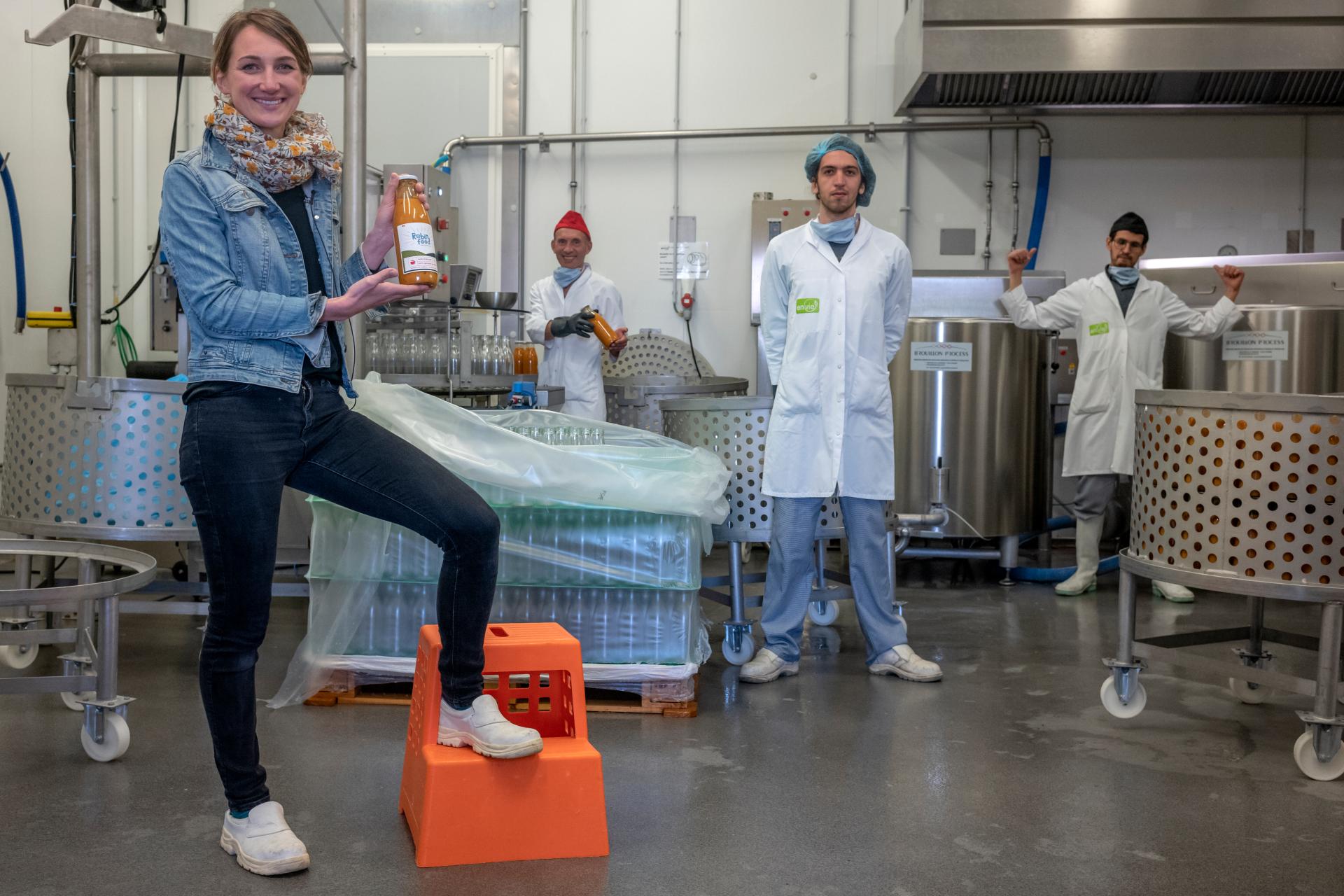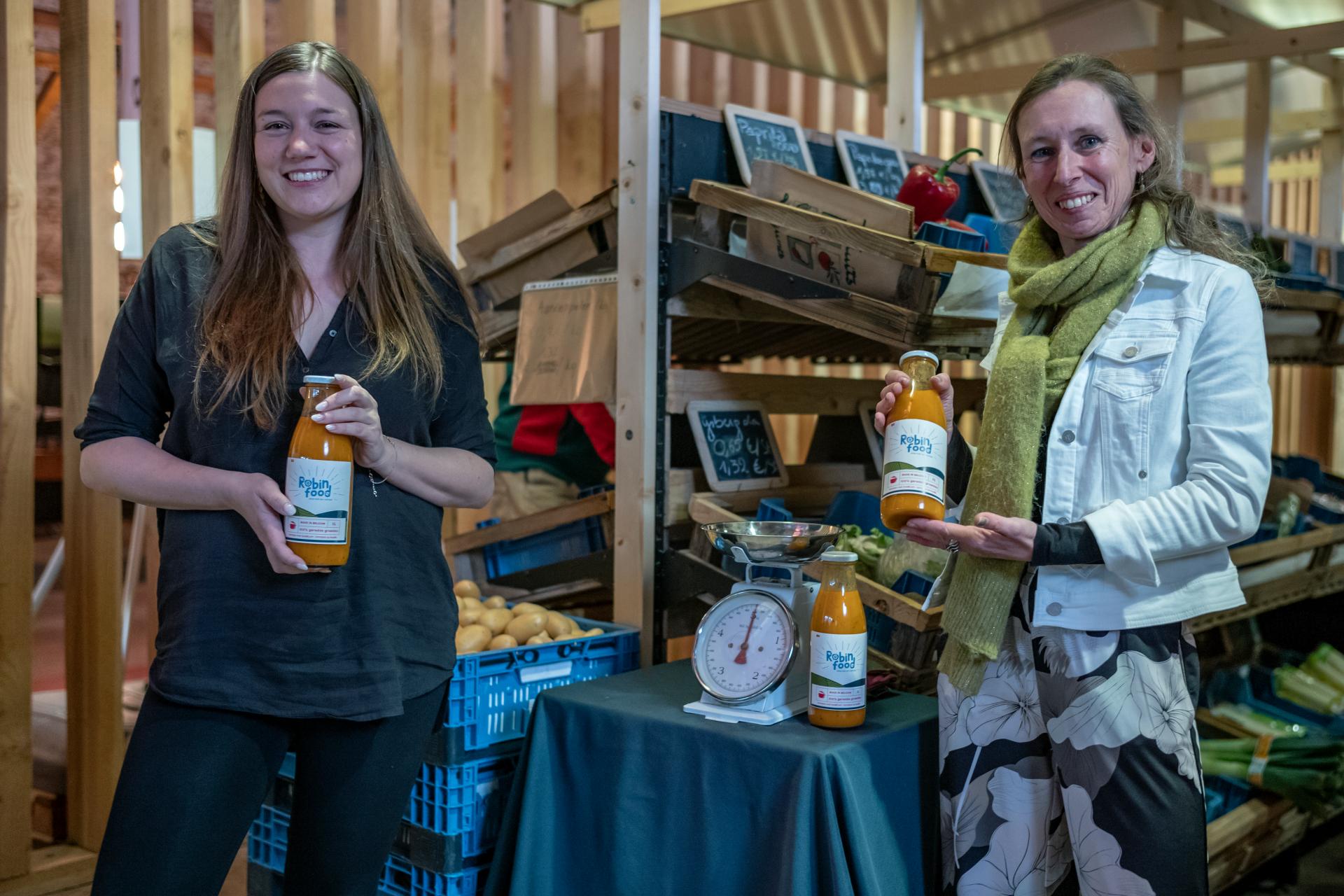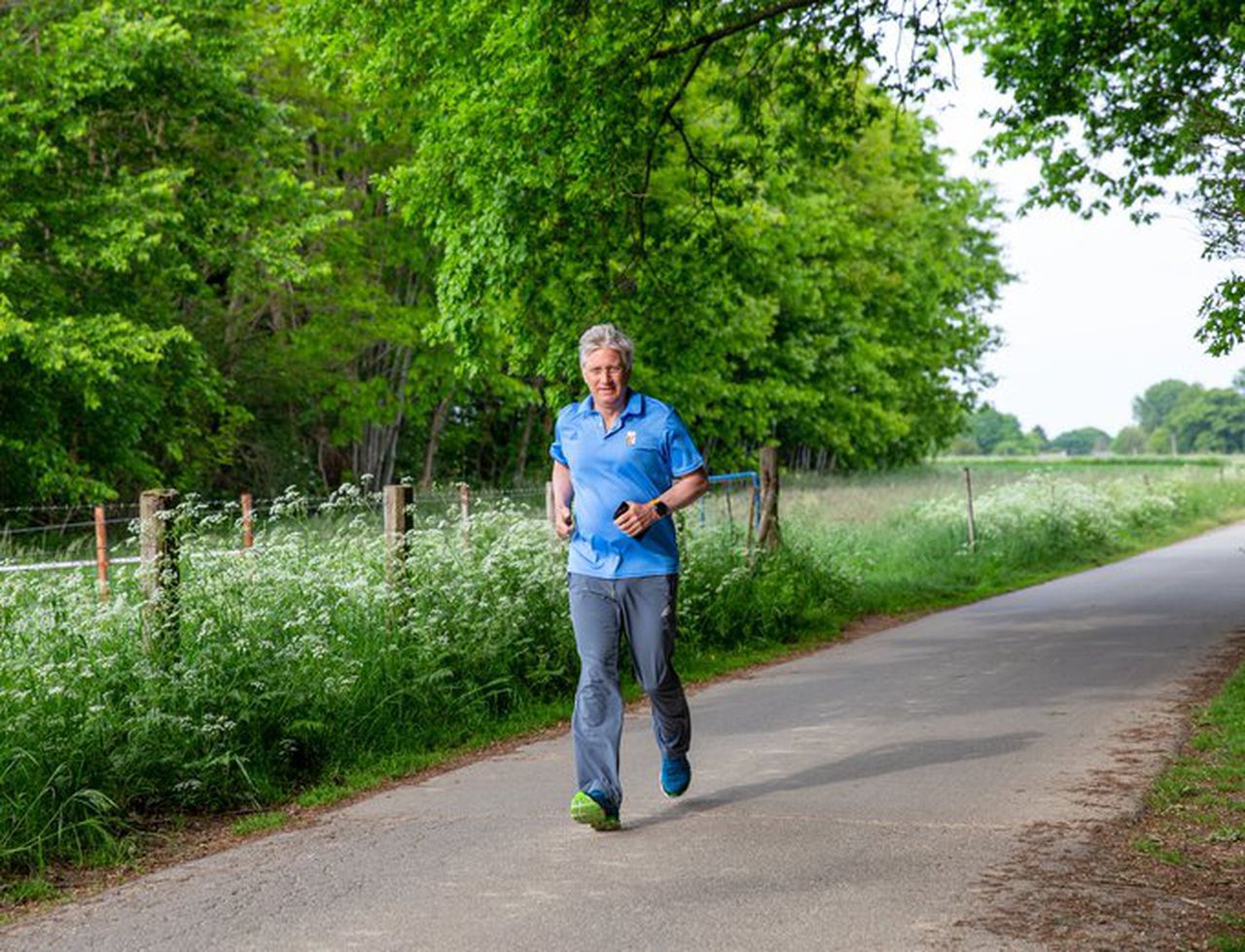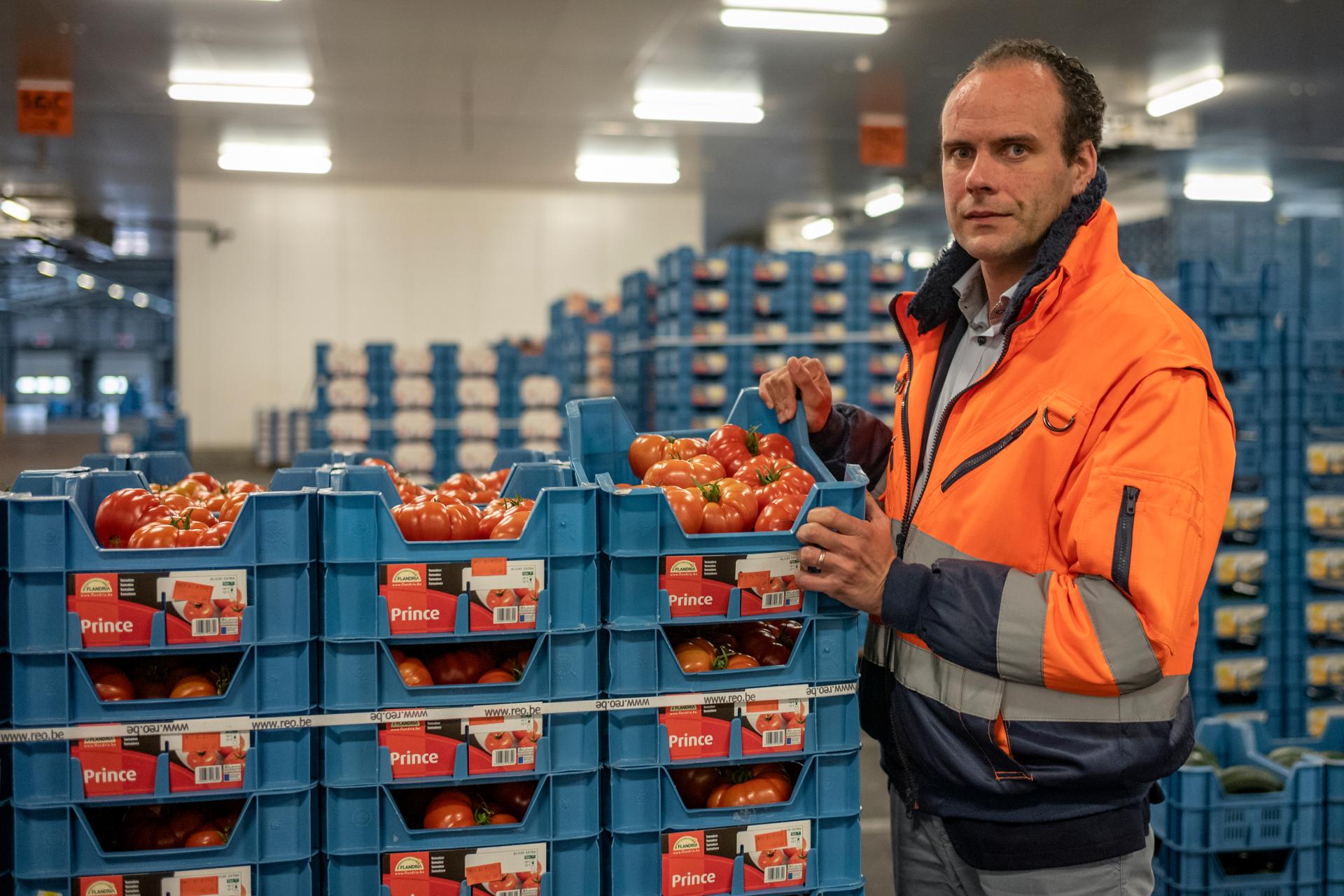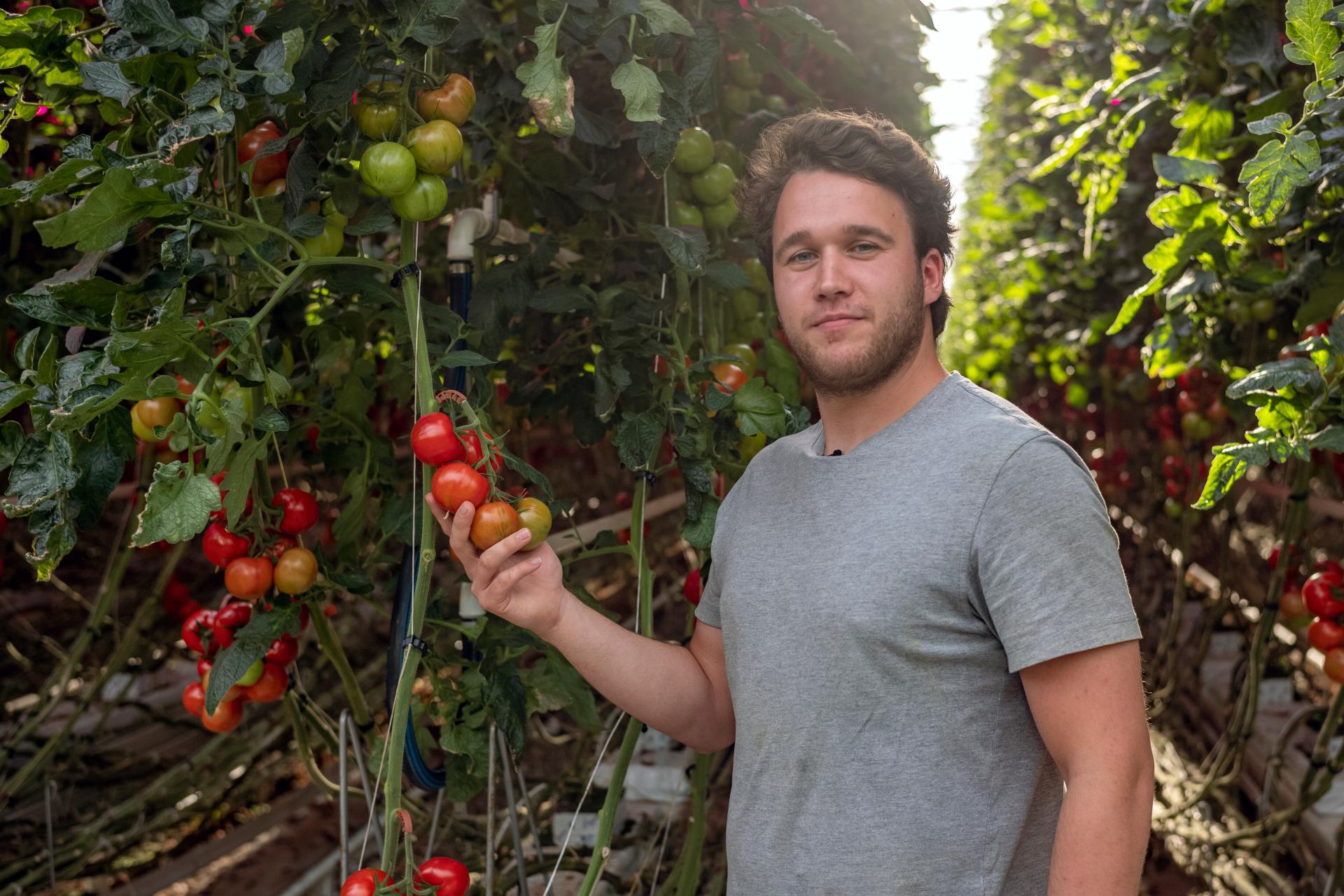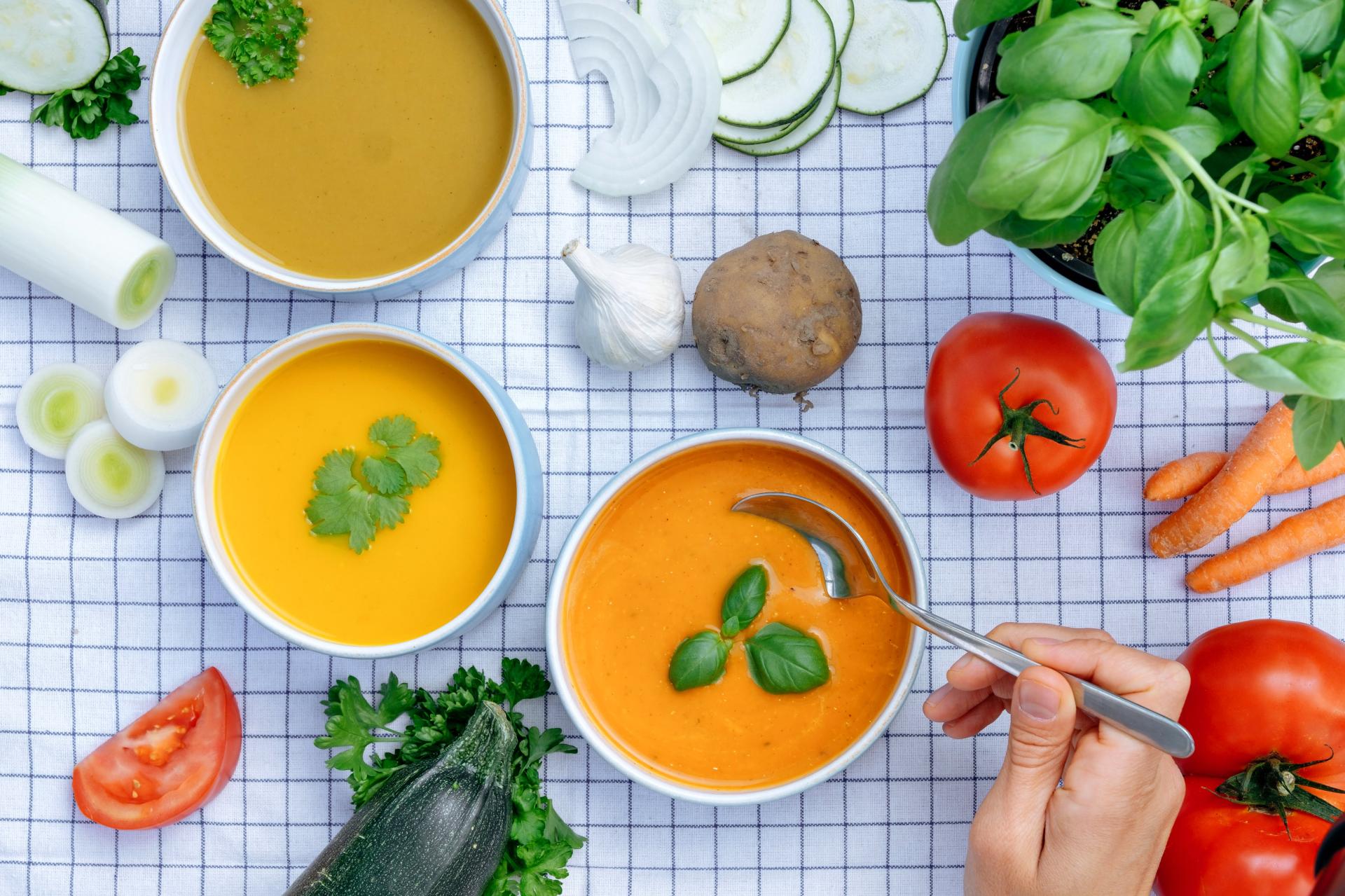Robin Food 'Covid-19 Challenge'
Basic information
Project Title
Full project title
Category
Project Description
The Covid-19 pandemic resulted in large amounts of surplus vegetables that farmers and auctions struggled to sell due to lockdown closures. The economic shock caused rising unemployment and a growing number of people lacked the resources to feed their families. Operation Robin Food was launched to turn the surplus harvest into soup. This was then distributed to people in need. Citizens - and the Belgian king - raised funds by running or walking for the crowdfunding campaign ‘Covid-19 Challenge’.
Geographical Scope
Project Region
Urban or rural issues
Physical or other transformations
EU Programme or fund
Which funds
Description of the project
Summary
During the Covid-19 crisis, an increased number of people lacked the means to provide their families with healthy food. Food aid organizations and social grocery stores saw an increase in demand, while there was less surplus through supermarkets. More help was needed. Lockdown regulations simultaneously disrupted all stages of the food chain. Consumer demand shifted from out of home to retail. The agricultural sector faced a significant drop in income and a rise in surpluses as the demand for certain products drastically decreased due to border closures and the suspension of deliveries to the HORECA sector. To avoid losing their entire harvest,they urgently needed to find new distribution channels. Civil society organisations Saamo, Rikolto, EIT Food and Envie joined forces to unite these two needs in Operation Robin Food. EIT Food invested € 20.000 to launch a pilot. Citizens were then engaged through a health challenge that doubled as a crowdfunding campaign. It united people in expressing their solidarity during this unprecedented time in history. Not only caused the pandemic drastic changes in daily life, but also a longing in people to feel connected and show solidarity with one another. The covid-safe crowdfunding campaign ‘Covid-19 Challenge’ encouraged people to walk or run 19 kilometer in 1 week and donate € 7,95, as a participation fee, to produce 3 liters of soup. The raised funds were used to deliver soup to the most deprived: the elderly, the homeless, poor families, etc. In total, 13.586 people participated and Robin Food raised € 136.194,10. The first goal was to produce and distribute at least 20,000 liters of soup, but thanks to the successful crowdfunding this went up to 72,000 liters. The second goal was to offer sustainable solutions to an agriculture in disarray. The third objective was to boost employment opportunities for socially vulnerable people, as the social economy soup producer employs people with a distance to the job market.
Key objectives for sustainability
The key objectives of the Robin Food Operation in terms of sustainability are centred on the food production level and on the circular approach to both society and to help people in need.
The different stages of the food chain got heavily disrupted due to strict lockdown closures in 2020. The main objective was to avoid or at least reduce the extreme increase in food waste and food loss due to unexpected vegetable surpluses (f.e. potatoes, asparagus) on the production level.
To save the vegetables, operation Robin Food found a destination for them - vulnerable people in society - as well as a production and distribution channel - social economy producers - that turned the vegetables into soup. Furthermore, we ensured that farmers and auctions received money for their produce, as this was a crucial side effect of them not being able to sell their products.
We closed the social impact loop by involving civil society both to raise awareness on the social-economic need as well as to leverage the impact of the initiative through financial support.
The concept of thinking in terms of circularity adds a mindset shift that goes beyond the scope of this project. Producers and even auctions always have a certain percentage of leftovers they have to throw away because it doesn’t meet certain criteria (shape, colour) although it’s perfectly healthy and edible.
This leads to ‘why’ this project is exemplary, as it continues to exist beyond the pandemic: we can avoid a big amount of food waste by setting up secondary streams for rejected products that can be revalorised by social economy for socially vulnerable groups.
Key objectives for aesthetics and quality
The qualitative experience of citizens was the crucial component for the success of Robin Food. The key objective was to gather people to experience togetherness and express solidarity by striving for a shared social goal. Due to the pandemic, people were heavily restricted in their activities, while at the same time being encouraged to exercise for their health. We created a qualitative experience that combined both goals: we encouraged people to walk or run 19 kilometers in one week to boost their health.
By creating a group challenge in Strava, people could participate with friends or family at a safe distance or virtually while leveraging their effort to support a social goal: donating funds so soups could be produced from surplus vegetables and donated to vulnerable groups in society. The formula had massive success, with even the Belgian king joining the challenge and advocating for the cause. This shows that you can mobilise big groups of people for a social cause, which certainly can be used for different initiatives.
As the project was rather practical, aestethics played a smaller part. We chose a catchy campaign slogan and image to trigger and encourage people to join the crowdfunding campaign. The smiling man with the slogan “walk or run for people in need”, was used as a practical call to action. It addressed the need and explained how people could contribute. The smiling man added an air of lightness and humour to the campaign, as the times were already emotionally heavy for society as a whole.
Furthermore, the branding of Robin Food soups reflected a summer picnic with vegetables and soup. This created a sense of togetherness around a table. The logo for Robin Food - the arrow and the apple - depicts the story of Robin Food who aims to fight for and help poor, vulnerable people. As the project was such a success, Robin Food continued to exist beyond this original campaign. This also included the concept and branding.
Key objectives for inclusion
One main objective in terms of inclusion lies in public participation: the engagement of citizens in a crowdfunding health challenge to make food surpluses accessible for vulnerable groups. The challenge was inclusive in its setup and its target: uniting people in solidarity to support the most vulnerable among us in times of crisis. The participants supported the access to healthy food through their donation, in return they received an emotional fulfilment.
We deliberately chose to make the physical challenge accessible and affordable to all. Participants could walk or run the challenge depending on their physical abilities. They had one week to reach the 19 kilometer target. This was tracked on Strava, but there was no exclusion parameter. The challenge ‘subscription fee’ was a recommended amount, but wasn’t enforced either. There was no exclusion if people wanted to participate, but could only afford to donate € 2,63 euro instead of the recommended € 7,95.
The second objective was to provide alternative opportunities for farmers and auctions to receive income for the crops they grew but couldn’t sell.
In terms of equal opportunities, there was a specific focus on providing work – the processing of soups – to social economy company Envie. This company employs and trains people with a distance to the regular job market in the revalorisation of leftovers in the food chain. A vulnerable group themselves, this work experience increased their job possibilities.
Furthermore, growing this niche sector - social economy food processors - due to the pandemic offered long term perspectives of higher employment as this kind of project continues to exist.
Last but not least, we facilitated crucial social inclusion by providing disadvantaged people in society with access to healthy food. The fact that Robin Food continues to serve these people beyond the scope of this project, is probably the single most important.
Results in relation to category
Robin Food is situated in category 4: Shaping a circular industrial ecosystem and supporting life-cycle thinking. Therefore, our main impact is achieved by reducing food waste by setting up a circular loop that revalorized the surplus vegetables and turned them into soups. The overarching success of the entire campaign was that the formula of the concept was so successful, that the Robin Food brand became a social business model that continues its original mission to this day. Today, the brand has sauces and juices and is available in Belgium, the Netherlands and Spain. The original pilot that got €20.000 funding from EIT Food aimed to produce 20.000 liter soup. Thanks to the successful crowdfunding campaign we could produce an additional 52.000 liter soup. In it’s totality we produced 72.000 liter soup during the first large Covid-19 lockdown. This means that we were able to rescue 43 ton of vegetables throughout the harvest season of 2020.
The second area we achieved our impact, was in connecting with the right target group. We didn’t only manage to rescue surplus vegetables from going to waste, but we also found a target group in society that really needed support in accessing healthy food. To give an idea: through reaching our first goal of 20.000 liter soup we could support 2000 families per week in 2 Belgian provinces in April and May. Due to the additional income from the crowdfunding, we could provide in total more than 40.000 Belgian households with soups for a similar time period. The impact of the Robin Food Operation was a triple win, in the true sense of the concept: people, planet, profit. Setting up the crowdfunding campaign to involve citizens, wasn’t only a social success but also a monetary one. 13.586 people, including the Belgian king Filip, participated in the challenge. Participants paid € 7,95 – the registration fee was a donation to the project- which equals 3 litres of soup. The total amount raised was € 136.194,10.
How Citizens benefit
Different non-profit organisations came together to co-create an inclusive answer to the various social and economic challenges as listed above. Through their variety in expertise, they each had close contact with the relevant target groups and economic sectors. As first-hand witnesses to the new economic realities and their consequences, they raised their concerns with each other and this led to the joint Robin Food Operation. Each one of them played a crucial role in the implementation and execution of the project.
Rikolto, expert in sustainable agriculture, was the lead project coordinator and communicator. Saamo is a social organization that is connected to various organisations that work with people who live in vulnerable conditions. They developed the Robin Food label and to this day continue to run the Robin Food project. Saamo made sure the soups reached the people who needed them most.
Envie was the start-up and social enterprise that became the producer of the soups from the surplus vegetables from Belgian farmers. Envie, through its set-up, could employ a larger group of vulnerable people through the increased workload, and thus increase their social impact. Reo Auction played a crucial role in connecting Envie with food surpluses of Belgian farmers and supplying those.
EIT Food, a European network organization that works on food system innovation, provided the initial funding. This paid for the first pilot project and the ability to focus on external communication. We could increase our reach by setting up a crowdfunding campaign with Zatopek. This Covid-19 Challenge, which involved citizens, ended up playing a key role in the overall success and the following impact of the entire project in terms of money raised and consequently the number of vegetables being rescued, soups being produced, amount of vulnerable people that were provided with healthy food and the fact that Robin Food continues to exist.
Physical or other transformations
Innovative character
Through Operation Robin Food we managed to massively reduce food waste in the first chains of the food supply system. Unique about our approach was the link to socially vulnerable groups in society. This direct connection was an innovation for both the food sector and the social sector. By bridging this gap through Robin Food we managed to overcome a big paradox that, to this date, is occurring globally: on one side ⅓ of food goes to waste, while on the other side ¼ of school children don't have access to healthy food.
This project focuses on a low-threshold solution that offers food producers a market for their surpluses. The link between supply and demand currently has to be facilitated manually.
By reaching new sales markets and developing new partnerships, we focus on new valorisation and economic opportunities. By not just donating the vegetables to families directly but directing them to a food processor to turn them into soups, we create opportunities for social employment in an inclusive way.
We developed a viable business model that allows affordable prices for vulnerable groups and still allows the food processing companies or catering facilities to cover all their costs. We applied our inclusive approach also to our sales model. Part of our products are being sold in the “classic” trade circuit, at a premium price. People that can afford it pay a bit more, to cover part of the reduced price of the soups that are being sold in the social groceries. This makes it possible for people with fewer means to buy the products at a reduced price at the social grocery store.
Learning transferred to other parties
There are two main learnings we can formulate as a conclusion of this successful project. For both of them, we hope to encourage and inspire other organisations to use them to leverage their impact.
The first one is the engagement of citizens. Do not just ask them for a donation, but offer an experience in return. Creating a narrative includes people in the story, from problem to solution. Offering a clear call to action, satisfies the urge to feel physically involved in reaching a goal. The sense of connection and solidarity is never achieved at such a large scale when citizens or consumers are simply asked for a donation. Having a strong citizen involvement furthermore increases the visibility of the initiative drastically in terms of press coverage. Once this is happening, a snowball effect occurs: more well-known people - f.e. the Belgian king - announce their participation, which exponentially increases visibility and participation again.
Other than having more participants and thus funds, this visibility is a crucial element in shining light on a social or economical problem. This begins with raising awareness, but through this visibility, it will reach the highest levels in the public debate. This can pressure or urge the responsible ministers to take direct action. This powerful leverage tool can be used in various contexts.
A second learning is to connect two needs: a surplus and a lack of something, in this case in the context of food. From a circular point of view, this perspective might be able to connect lots of waste streams to new potential sales markets inside and outside the social realm. In the social realm, an economically strong strategy is to sell your brand - with its social impact story - in premium stores where people are willing to pay a higher price and this way, fund part of the cost so disadvantaged people can then buy them for a lower price in the social grocery store.

